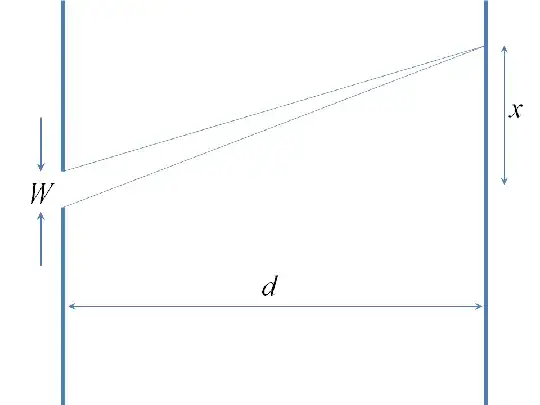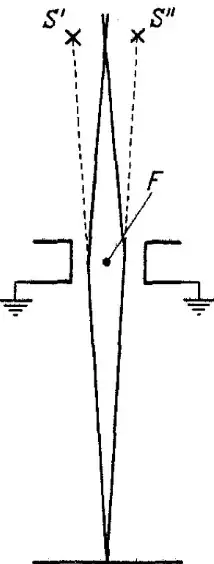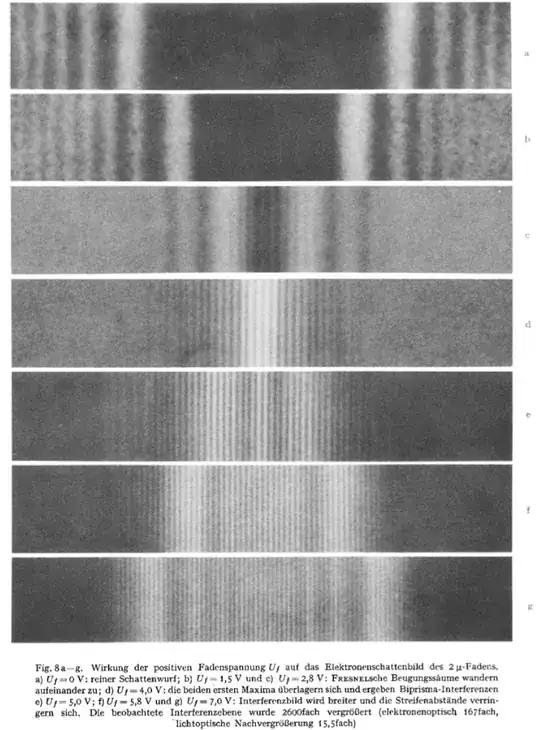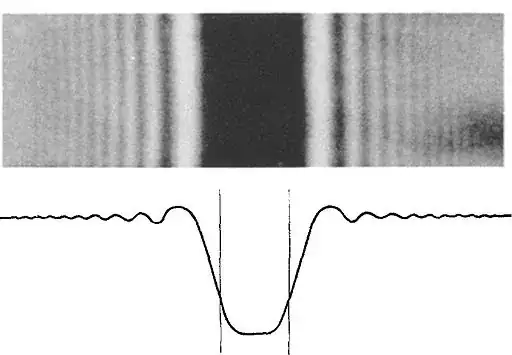To fill out Mew's comment further:
A slit is a gap wide enough for the electron to pass through
True, but for the purposes of a clear discussion of double slit interference, we need the following further quality: a slit should be such that there is much less than a wavelength difference between the pathlength of all paths through the putative "slit" to any point on the interference screen in the experiment. So it depends on the dimensions of the experiment. In the diagram below, the maximum path difference between all possible paths through the slit is
$$\sqrt{d^2 + \left(x+\frac{W}{2}\right)^2} - \sqrt{d^2 + \left(x-\frac{W}{2}\right)^2}\approx \frac{x\,W}{d}$$
So, if $\frac{2\,\pi\,x\,W}{\lambda\,d}\ll 1$, where $\lambda$ is the wavelength of the interfering field, then any interference effects can only be owing to the different paths through two separate slits, and there is negligible interference between paths through the same slit. When this condition is not fulfilled, there will be significant interference effects from each slit alone.

Answers to Comments:
User Steveverrill writes:
While this is interesting, a worked example would be useful. I understood the wavelength of electrons is much less than visible light (approximately 3 orders of magnitude even for electrons accelerated to a handful of eV according to this.) quantummechanics.ucsd.edu/ph130a/130_notes/node72.html. It seems to me the slit would have to be impossibly thin. W<
You need to set $d/x$ to be big enough to uphold the condition stated and also you can use electrostatic lenses to magnify the diffraction pattern. For example, see:
Roger Bach, Damian Pope, Sy-Hwang Liou and Herman Batelaan, "Controlled double-slit electron diffraction", New J. Phys. 15 2013
where we have 62nm wide slits and 50pm wavelength electrons: this means that $d/x$ has to be of the order of $10^5$: with a 150um wide pattern, this makes for $d\approx 75\times 10^{-6}\times 10^5$ which is $7.5m$, but electrostatic lenses will let you shorten that distance somewhat. See the full experimental writeup that you can download from that article: go to the "supplementary data" at http://iopscience.iop.org/1367-2630/15/3/033018/media and click on the download arrow: you'll get a more comprehensive document on the setup.



